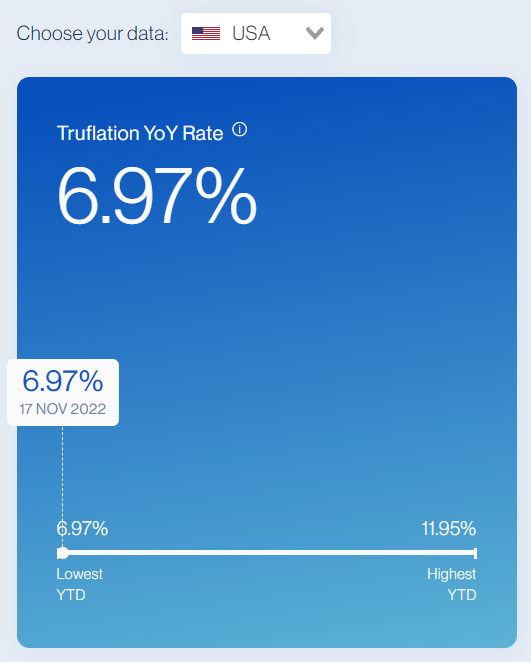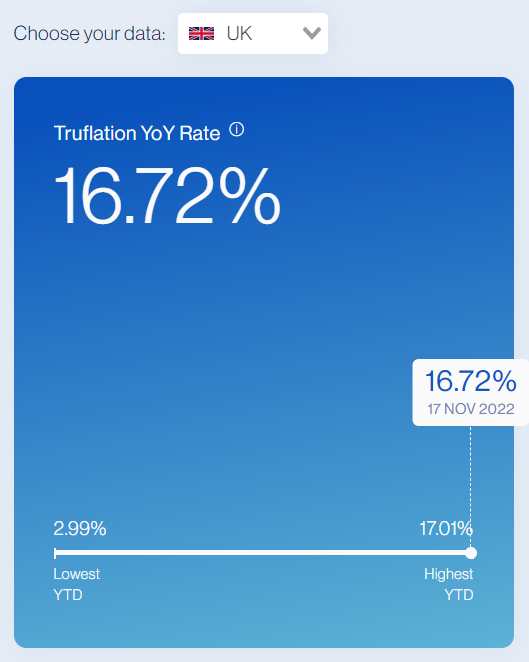Housing prices won’t come down much because building costs are outrageous. We can’t find builders to do anything. Even big projects are unable to attract bidders. The city got only 2 bids out of a pool of 570 qualified contractors. And of course they overbid
“Waller says the Fed’s policy rate should peak well before inflation reaches 2% since it takes months for the full effects of a rate increase to work through the economy. Monetary policy operates with a lag effect.”
That’s a change. Before, they were messaging that increases would continue until inflation reached 2%. He’s still saying there will be increases next year though.
“We still have a ways to go,” Waller said. “I expect that getting inflation to fall meaningfully and persistently toward our 2 percent target will require increases in the federal funds rate into next year.”
Just FYI: Last 3 conferences, FED chair was telling the same, we raise the rate, pause the rate for some times (may be few quarters) to monitor the effect of rate hike on inflation and then when we are convinced inflation under control, we reduce rates.
Last conference, when someone asked when you are possibly pausing rate, he replied we did not discuss anything in our meeting, and it is too early to discuss that topic!
It seems like spending by consumers have not really stalled in any way and I see hotels, flights, vacation homes, cruises, malls, restaurants etc. super busy. I have not observed any dip in spite of some stock market correction. This is primarily because house prices are still holding up (10% correction is a blip after 50% rise) and asset holders continue to feel rich. Someone famous rightly said that house prices are the biggest driver of wealth effect and consumer spending. All the trillions Fed had injected will keep moving from one bank account to another fueling the spending and inflation. And as long as interest rates remain below inflation rate, borrowers will continue to be rewarded, debt would remain free and people with good credit will continue to borrow.
I also notice that the home listing is plummeting. This implies that asset holders are now unwilling to sell and move away from 2% locked mortgage rates. And given that construction costs, land cost, permit cost, labor cost, etc. has risen so much the future homes would be expensive and scarce. The other problem with USA is that no one wants to do hard work anymore – home construction, land development, needs lot of hard work. The older homes are built much more robustly than the new cardboard boxes, that often skims on materials and costs and processes. The new breed of construction people are very unskilled and has little clue and experience. All this implies that people who own homes would think they are sitting on goldmine as good quality homes will become more and more rare. And they would think this will clearly continue to drive their value and high inflation will only compound this. So the wealth effect will continue. All of this will end up very badly because Fed will be forced to raise rates to a level that will crash everything. May be 8% or 10%. It seems like this is the only cure now. It seems like we will repeat Volker era.
I wonder how much the fed will consider this, because rent/shelter is a huge component of CPI. They’ve acknowledged there are lags in their data.
.
That is what my realtor told me.
Actually todays houses are much better built that previous generations of houses. Everything is better … Foundations, windows, flooring plumbing electrical, energy efficiency.
. As usual Reinv is totally wrong and reversed himself. So much for his 50% loss prediction. Time to retire to his bear cave.
My understanding is, quality depends not even on the builders but on the individual construction manager foreseeing it. A community can have good and bad homes for the same builder based on different managers working on it. Not all new homes are badly built. This’s what I learnt while buying new build. Pls correct me if I’m wrong.
The badly built myth is promoted by litigators drumming up business. Homes today are built better in every aspect. But consumers will sue over any problem. And are encouraged by ridiculous disclosure laws. The only think better in the good old days was the lumber quality and the availability of skilled craftsmen. Modern construction need much less skilled labor… especially carpenters. Trusses and off site prefabrication has replaced the need for skilled framers.
Everything today is designed to use less labor with less skill.
But modern engineering has made new homes immensely stronger and more durable than older houses. Especially houses built before the 80s. The technology for seismic and wind resistance is way better than 40 years ago. Foundations in California are mostly now built on drilled deep piers . Unheard of 40 years ago. Drainage grading and runoff control are all highly regulated and controlled. Hardly considered in the old days. Newer siding and roofing technologies have made house more waterproof and durable
Meanwhile the number of houses being built is down to 800,000/ year… Pandemic levels. And one third of the amount needed. Ultimately the Powell recession will create an extreme shortage of housing that will fuel the next price boom in 2-5 years.
You really do not know what you are talking. I am stunned. I own 100+ year old multi unit homes, really beautiful buildings and they are solid, not falling apart after 100 years of sun, wind and rain. Everything is thick and robust and feels strong. Once units were remodeled and the building was cleaned up and repainted it can easily go for another 20 years without any maintenance. Then I have relatively new ones that feel like they will blow in strong wind. Literally. And they are a constant problem child, one problem after another. It feels like they will not last another 20 years of wind and rain. Then I have a few brand new ones, they are the worst. Within 6 months, ceilings and walls are cracking, doors are bending, windows creaking, concrete has huge cracks, everything is shitty quality. I wonder how this building will hold up in 20 years from now.
You are full of yourself. I have designed over 2000 structures. Inspected thousands more . You are an idiot. “Thick and robust and feels strong”. Words from a neophyte. You might want to hire some one like me with 50 years experience in building and structural engineering to inspect the crappy buildings you are buying.
You obviously don’t know what you are buying. But from your bravado I suspect you are buying the cheapest deals you can get and don’t know how to judge quality. 100 year buildings are a mess bad foundations bad wiring bad windows plumbing plus no seismic integrity… you name it you have to fix everything.
I have owned one for the last 7 years (its 110 year old beautiful building) and have not fixed anything, nothing, nada. Only repainted after buying. Did remodel all units inside - added hardwood floors, new kitchen and bathroom. 50% bump in the rent. Zero hassle.
.
Older refers to a few years earlier. That is houses built recently (less than 3 years) are not as good.
In terms of materials I think the best home I ever owned was my first - a Sears Roebuck tract home built in '47. White oak flooring of a thickness, width and quality unavailable today. Redwood framing that just doesn’t rot (not a great structural wood though - the ceiling in the livingroom sagged a bit). Real tile countertops in the kitchen of a quality unavailable today.
The gun rack built into the master bedroom was a nice touch as was the picture window next to the front door with real lead inlays.
Prove it with examples. Maybe possible in Texas. But it is impossible and stupid to build substandard buildings in California.
The inspectors are brutal. And the litigation will kill you if you build a bad building.
.
Can be proved? It will be in the news.
I restored a 1906 building in Berkeley in 1976. I was naive like you are.
I thought old buildings were cool. Of course I didn’t even think about the lead and asbestos I inhaled. We restored the building top to bottom. Mainly cosmetic like you did. Although we put in a living space in the attic and converted a bedroom to a bathroom. We had no money. Built our own cabinets. Built a two story deck and finished the floors ourselves. Did not upgrade the shear walls or foundations. It’s now just another old building that probably needs a total upgrade again.
We thought our work was cool. But it was still an old building with old wiring old windows and old plumbing. We did replace the heater with a new one we got at a Sears parking lot sale for $500. Put in a new fireplace but in the dining room. So basically it had an obsolete floor plan in a pretty but obsolete house. Sold it for $90k. Probably worth $2m now.
Wow that’s quite a story.
BTW Among all my investments the 100+ year old buildings (I have 3 of those) have the best cash flow and least headaches. I’m now getting 15+% net profit on my total cash investment on these buildings. So far no other capex after the improvements.
And in terms of appreciation even if building value goes to zero (which will never happen) I am still green because the cost of land is more than what I paid in total.
If these buildings have lasted 100 years and are still solid I don’t see why they won’t go on for another 20 50 or 100 years. Two of them are beautiful historic buildings and they will become more vintage, rare and valuable with time. Have had few tenants who fell in love with the building pics and signed lease immediately without even a tour.

